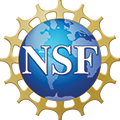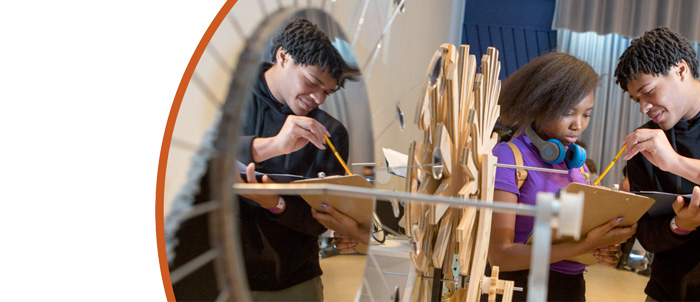Dialogic gesture in collaborative sense making in physics
Effective Years: 2022-2025
Active, collaborative learning approaches are widely seen as effective ways for students to learn undergraduate science, technology, engineering, and mathematics (STEM). However, learning outcomes are highly contingent on the quality of the interactional processes in which students engage. There is a great deal of research on successful verbal communicational practices in group work, but little is known about how nonverbal communicational practices like gesture contribute to successful collaboration. Previous research shows that when groups are responsive to, take up, and discuss one another’s spoken ideas, they are more successful at collaborative problem solving in STEM. In this project, researchers will investigate (1) how students are responsive to, take up, exchange, or interact with each other’s gestures while working together, and (2) how this behavior shapes or constrains groups’ problem solving and sense making in introductory undergraduate physics. This project will improve our understanding of the role nonverbal communication plays in collaborative learning, and it will contribute to the development of broader, more expansive, and inclusive definitions of the competencies and practices involved in learning and doing STEM.
In this project, researchers will analyze an existing large video corpus of active, collaborative physics learning in an algebra-based introductory undergraduate physics course using the Collaborative Learning through Active Sense-Making in Physics (CLASP) curriculum at a Hispanic, Asian American and Native American Pacific Islander-Serving Institution, where diverse groups of students engage in group sense making to model the energy dynamics in mechanics scenarios. After creating a comprehensive content log of the video corpus, the team will code the corpus for representational gesture use to identify the forms of dialogic gesture used by physics groups. Using multimodal conversation analysis, researchers will then characterize the communicational functions of these dialogic gestures and create a taxonomy of dialogic gesture types. Researchers will examine how students’ use of certain types of dialogic gesture contributes to (or constrains) groups’ sense-making practices in physics as part of developing accurate and robust scientific models. This project will make fundamental contributions to advance current theoretical understandings of learning and communication in STEM by (1) creating a taxonomy of forms and functions of dialogic gesture types that students use in collaborative physics learning, (2) identifying and characterizing mechanisms by which dialogic gesture use supports (or constrains) sense making practices, and (3) characterizing relationships between students’ use of dialogic gesture and sense making outcomes in physics. This project will highlight, identify, and characterize assets (in the form of communicational resources) that a diverse set of students bring to the classroom.
This project is supported by NSF's EHR Core Research (ECR) program. The ECR program emphasizes fundamental STEM education research that generates foundational knowledge in the field. Investments are made in critical areas that are essential, broad and enduring: STEM learning and STEM learning environments, broadening participation in STEM, and STEM workforce development. The program supports the accumulation of robust evidence to inform efforts to understand, build theory to explain, and suggest intervention and innovations to address persistent challenges in STEM interest, education, learning and participation.
This award reflects NSF's statutory mission and has been deemed worthy of support through evaluation using the Foundation's intellectual merit and broader impacts review criteria.




